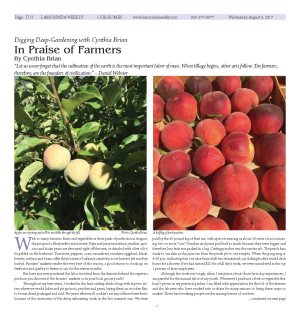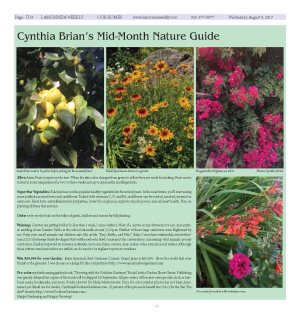|
|
Published August 9th, 2017
|
Digging Deep-Gardening with Cynthia Brian
|
| In Praise of Farmers |
| By Cynthia Brian |
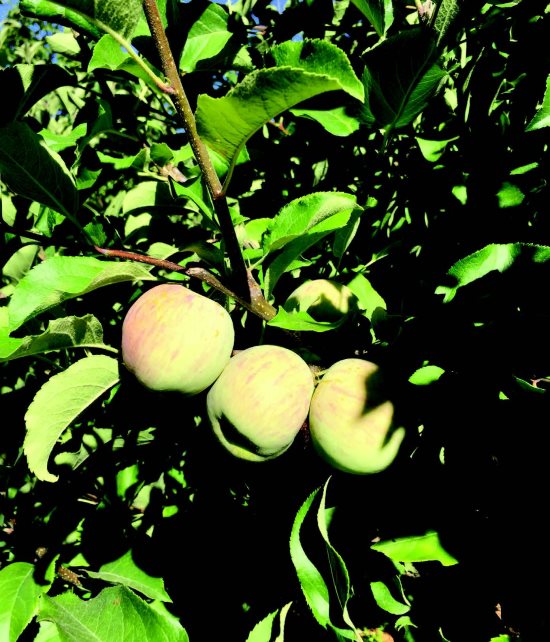 |
| Apples are ripening and will be available through the fall. Photos Cynthia Brian |
"Let us never forget that the cultivation of the earth is the most important labor of man. When tillage begins, other arts follow. The farmers, therefore, are the founders of civilization." - Daniel Webster
 With so many luscious fruits and vegetables at their peak of perfection in August, the prospect of the perfect meal awaits! Ripe and juicy nectarines, peaches, apricots and Asian pears are devoured right off the tree, or drizzled with olive oil to be grilled on the barbecue. Tomatoes, peppers, corn, cucumbers, zucchini, eggplant, blackberries, melons and beans offer the promise of culinary creativity as we harvest yet another bushel. Farmers' markets tender the very best of the season, a good reason to stock up on freshness and quality to freeze or can for the winter months.
With so many luscious fruits and vegetables at their peak of perfection in August, the prospect of the perfect meal awaits! Ripe and juicy nectarines, peaches, apricots and Asian pears are devoured right off the tree, or drizzled with olive oil to be grilled on the barbecue. Tomatoes, peppers, corn, cucumbers, zucchini, eggplant, blackberries, melons and beans offer the promise of culinary creativity as we harvest yet another bushel. Farmers' markets tender the very best of the season, a good reason to stock up on freshness and quality to freeze or can for the winter months.
 But have you ever pondered the labor involved from the farmers behind the superior produce you discover at the farmers' markets or in your local grocery aisle?
But have you ever pondered the labor involved from the farmers behind the superior produce you discover at the farmers' markets or in your local grocery aisle?
 Throughout my teen years, I worked in the fruit cutting sheds along with my two sisters where we would halve and pit apricots, peaches and pears, laying them on wooden flats to be sun dried, packaged and sold. For years afterward I couldn't eat any of these three fruits because of the memories of the dirty, exhausting work in the hot summer sun. We were paid by the 50-pound lug of fruit cut, with apricots earning us about 20 cents a box containing two
hundred or more "cots." Peaches and pears paid half as much because they were bigger and therefore, less fruit was packed in a lug. Cutting peaches was the nastier job. The peach fuzz stuck to our skin as the juice ran from the peach pit to our armpits. When the gong rang at 4:30 p.m. indicating that our nine-hour shift was terminated, our itching bodies would dash home for a shower. If we had earned $20 for a full day's work, we were considered in the top 1 percent of farm employees.
Throughout my teen years, I worked in the fruit cutting sheds along with my two sisters where we would halve and pit apricots, peaches and pears, laying them on wooden flats to be sun dried, packaged and sold. For years afterward I couldn't eat any of these three fruits because of the memories of the dirty, exhausting work in the hot summer sun. We were paid by the 50-pound lug of fruit cut, with apricots earning us about 20 cents a box containing two
hundred or more "cots." Peaches and pears paid half as much because they were bigger and therefore, less fruit was packed in a lug. Cutting peaches was the nastier job. The peach fuzz stuck to our skin as the juice ran from the peach pit to our armpits. When the gong rang at 4:30 p.m. indicating that our nine-hour shift was terminated, our itching bodies would dash home for a shower. If we had earned $20 for a full day's work, we were considered in the top 1 percent of farm employees.
 Although the work was tough, when I reminisce about those farm day experiences, I am grateful for the manual labor of my youth. Whenever I purchase a fruit or vegetable that hasn't grown in my personal garden, I am filled with appreciation for the toil of the farmers and the laborers who have worked rain or shine for many seasons to bring these crops to market. These hard working people are the unsung heroes of our lives.
Although the work was tough, when I reminisce about those farm day experiences, I am grateful for the manual labor of my youth. Whenever I purchase a fruit or vegetable that hasn't grown in my personal garden, I am filled with appreciation for the toil of the farmers and the laborers who have worked rain or shine for many seasons to bring these crops to market. These hard working people are the unsung heroes of our lives.
 My Daddy was one of those men. Farming was a career that demanded attention 365 days a year. He could work for several months only to have a complete crop and his one annual paycheck devastated by rain or pests or drought. When he was asked why he didn't like to gamble he'd retort that being a farmer meant that every day was a gambling day. He didn't have to go to the tables to wrestle with Lady Luck.
My Daddy was one of those men. Farming was a career that demanded attention 365 days a year. He could work for several months only to have a complete crop and his one annual paycheck devastated by rain or pests or drought. When he was asked why he didn't like to gamble he'd retort that being a farmer meant that every day was a gambling day. He didn't have to go to the tables to wrestle with Lady Luck.
 From the time my siblings and I could toddle, we worked the fields. As our age and abilities grew, we were given more responsibilities. By 8 years of age, we all drove tractors, plowed the vineyards, picked fruit, and worked the harvest. We always knew where our food came from because as farmers, we planted, weeded, watered, tilled, mowed, hauled, mulched, fertilized, pruned, sprayed, protected and harvested, then started the process all over again prepping for the next season of crops.
From the time my siblings and I could toddle, we worked the fields. As our age and abilities grew, we were given more responsibilities. By 8 years of age, we all drove tractors, plowed the vineyards, picked fruit, and worked the harvest. We always knew where our food came from because as farmers, we planted, weeded, watered, tilled, mowed, hauled, mulched, fertilized, pruned, sprayed, protected and harvested, then started the process all over again prepping for the next season of crops.
 There have been surveys done around the world asking children to explain from where their food came. Responses in the United States included that cucumbers come wrapped in plastic, eggs come from cartons, peas are found in the freezer, and chocolate milk is from brown cows. Recently, 27 percent of Australian kids in their final year of primary school believed that yogurt grew on trees while 75 percent thought cotton socks came from animals. In England, one-third of the country's children thought fish sticks came from pigs or chickens, tomatoes grew underground, potatoes grew on bushes, and cheese was raised on plants. More disturbing was the majority of children stated that everything originates in the supermarket. Unfortunately adults didn't fare much better in surveys. These statistics reflect poorly on the intelligence of citizens in first world countries. We need to do better educate our public of where our food is grown, how long it takes to grow, and the hazards that farmers face.
There have been surveys done around the world asking children to explain from where their food came. Responses in the United States included that cucumbers come wrapped in plastic, eggs come from cartons, peas are found in the freezer, and chocolate milk is from brown cows. Recently, 27 percent of Australian kids in their final year of primary school believed that yogurt grew on trees while 75 percent thought cotton socks came from animals. In England, one-third of the country's children thought fish sticks came from pigs or chickens, tomatoes grew underground, potatoes grew on bushes, and cheese was raised on plants. More disturbing was the majority of children stated that everything originates in the supermarket. Unfortunately adults didn't fare much better in surveys. These statistics reflect poorly on the intelligence of citizens in first world countries. We need to do better educate our public of where our food is grown, how long it takes to grow, and the hazards that farmers face.
 America was an agrarian society until the early 1900s. Now we are a technology-focused country. As of the last census, only 1 percent of Americans are farmers. I commend the schools where gardening is part of the curriculum. We can all become more appreciative of the growing cycles when we become knowledgeable, and even more so when we become home farmers ourselves.
America was an agrarian society until the early 1900s. Now we are a technology-focused country. As of the last census, only 1 percent of Americans are farmers. I commend the schools where gardening is part of the curriculum. We can all become more appreciative of the growing cycles when we become knowledgeable, and even more so when we become home farmers ourselves.
 We have the responsibility to involve our children in the growing process by giving them the opportunity to plant, water, and tend to fruits, vegetables and herbs. Besides being a superb science lesson, children will develop an appreciation for farm freshness and feel a sense of achievement and accomplishment. An added benefit is children enjoy eating what they grew. Thankfully, there has been a renaissance in learning the skills of canning. Baking pies from scratch is becoming fashionable again. As a child, "putting up" our fruits and vegetables for winter consumption was a fun family affair, one I passed on to my children, and hope that one day they will pass it on to their progeny.
We have the responsibility to involve our children in the growing process by giving them the opportunity to plant, water, and tend to fruits, vegetables and herbs. Besides being a superb science lesson, children will develop an appreciation for farm freshness and feel a sense of achievement and accomplishment. An added benefit is children enjoy eating what they grew. Thankfully, there has been a renaissance in learning the skills of canning. Baking pies from scratch is becoming fashionable again. As a child, "putting up" our fruits and vegetables for winter consumption was a fun family affair, one I passed on to my children, and hope that one day they will pass it on to their progeny.
 The next time you bite into a peach - fresh, dried or canned - say a little prayer of thanks for the extraordinary efforts that went into its development. Farmers are the foundation of our civilization and we need to honor and respect their art. It's time we get back to our roots.
The next time you bite into a peach - fresh, dried or canned - say a little prayer of thanks for the extraordinary efforts that went into its development. Farmers are the foundation of our civilization and we need to honor and respect their art. It's time we get back to our roots.



|
Cynthia Brian's Mid-Month Nature Guide
 Allow Asian Pears to ripen on the tree. When the skin color changes from green to yellow they are ready for picking. Fruit can be stored at room temperature for two to three weeks and up to six months in refrigeration.
Allow Asian Pears to ripen on the tree. When the skin color changes from green to yellow they are ready for picking. Fruit can be stored at room temperature for two to three weeks and up to six months in refrigeration.

 Super Star Vegetables: Kale has been on the popular healthy vegetable list for several years. In the near future, you'll start seeing more publicity around beets and cauliflower. Packed with vitamins C, K, and B6, cauliflower can be roasted, mashed, steamed or eaten raw. Beets have anti-inflammatory properties, lower blood glucose, improve muscle power, and aid heart health. Plan on planting all three this autumn.
Super Star Vegetables: Kale has been on the popular healthy vegetable list for several years. In the near future, you'll start seeing more publicity around beets and cauliflower. Packed with vitamins C, K, and B6, cauliflower can be roasted, mashed, steamed or eaten raw. Beets have anti-inflammatory properties, lower blood glucose, improve muscle power, and aid heart health. Plan on planting all three this autumn.

 Order or be on the look out for bulbs of garlic, shallots and onions for fall planting.
Order or be on the look out for bulbs of garlic, shallots and onions for fall planting.

 Warning: Coyotes are getting bolder. In less than a week, I came within 10 feet of a coyote on my driveway at 9 a.m. and another ambling down Camino Pablo at the school sidewalk around 3:30 p.m. Neither of these large carnivores were frightened by me. Keep your small animals and children safe. My article "Rats, Rattles, and Voles" (http://www.lamorindaweekly.com/archive/issue1111/Gardening-Guide-for-August-Rats-rattles-and-voles.html) increased the conversation concerning wild animals around our homes. Readers reported an increase in skunks, raccoons, foxes, coyotes, deer, moles, voles, rats, mice and snakes. Although these critters were here before we settled, we do need to be vigilant to protect ourselves.
Warning: Coyotes are getting bolder. In less than a week, I came within 10 feet of a coyote on my driveway at 9 a.m. and another ambling down Camino Pablo at the school sidewalk around 3:30 p.m. Neither of these large carnivores were frightened by me. Keep your small animals and children safe. My article "Rats, Rattles, and Voles" (http://www.lamorindaweekly.com/archive/issue1111/Gardening-Guide-for-August-Rats-rattles-and-voles.html) increased the conversation concerning wild animals around our homes. Readers reported an increase in skunks, raccoons, foxes, coyotes, deer, moles, voles, rats, mice and snakes. Although these critters were here before we settled, we do need to be vigilant to protect ourselves.

 Win $50,000 for your Garden: Enter America's Best Gardener Contest. Grand prize is $50,000. Show the world that your thumb is the greenest. I was chosen as a judge for this competition!
http://www.americasbestgardener.com
Win $50,000 for your Garden: Enter America's Best Gardener Contest. Grand prize is $50,000. Show the world that your thumb is the greenest. I was chosen as a judge for this competition!
http://www.americasbestgardener.com

 Pre-order my forthcoming garden book, "Growing with the Goddess Gardener," Book I in the Garden Shorts Series. Publishing was greatly delayed but copies of the book will be shipped by September. All pre-orders will receive extra goodies such as heirloom seeds, bookmarks, and more. Book is $14.95 for black/white interior. Price for color interior photos has not been determined yet. Email me for details,
Cynthia@GoddessGardener.com. 25 percent of the proceeds benefit the 501c3 Be the Star You Are!(r) charity.
http://www.GoddessGardener.com/
Pre-order my forthcoming garden book, "Growing with the Goddess Gardener," Book I in the Garden Shorts Series. Publishing was greatly delayed but copies of the book will be shipped by September. All pre-orders will receive extra goodies such as heirloom seeds, bookmarks, and more. Book is $14.95 for black/white interior. Price for color interior photos has not been determined yet. Email me for details,
Cynthia@GoddessGardener.com. 25 percent of the proceeds benefit the 501c3 Be the Star You Are!(r) charity.
http://www.GoddessGardener.com/
 Happy Gardening and Happy Growing!
Happy Gardening and Happy Growing! |
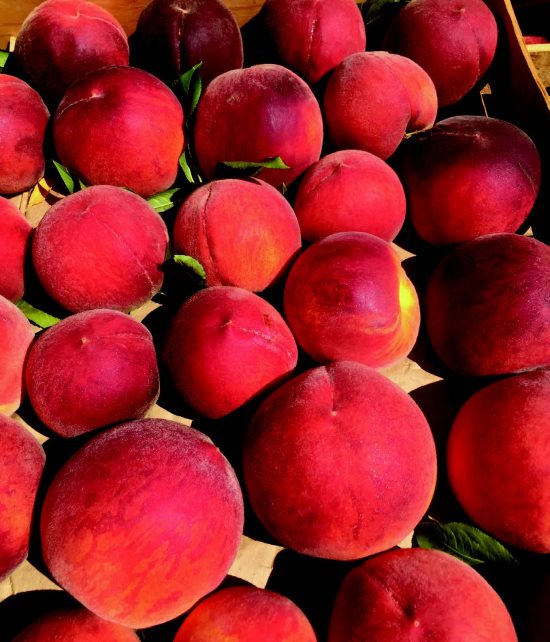 |
| A half lug of fresh peaches. |
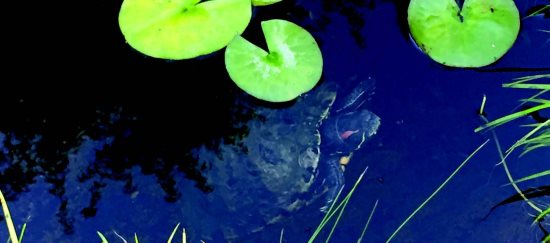 |
| A turtle pokes its head from beneath the lily pads in the pond. |
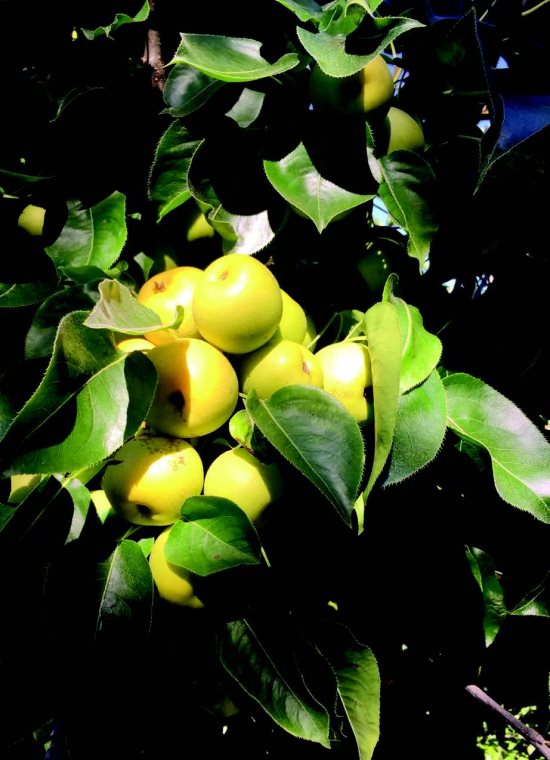 |
| Asian Pears need to be yellow before picking for the sweetest flavor. |
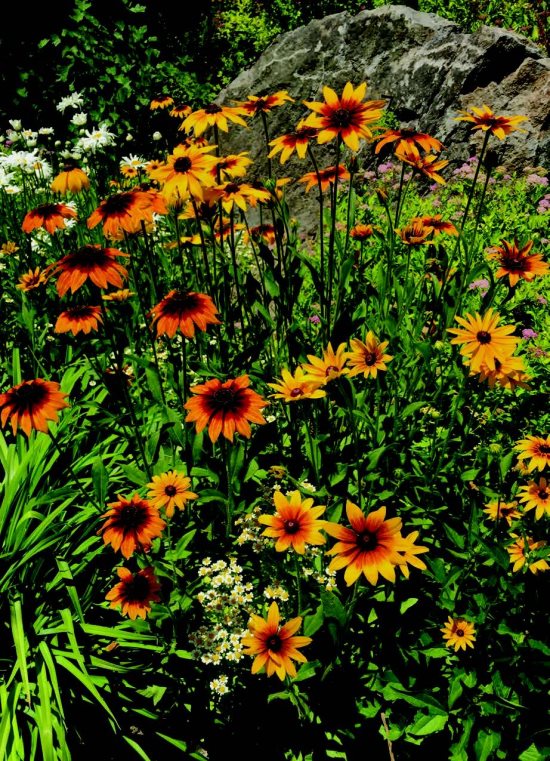 |
| Black Eyed Susan shines in a garden. |
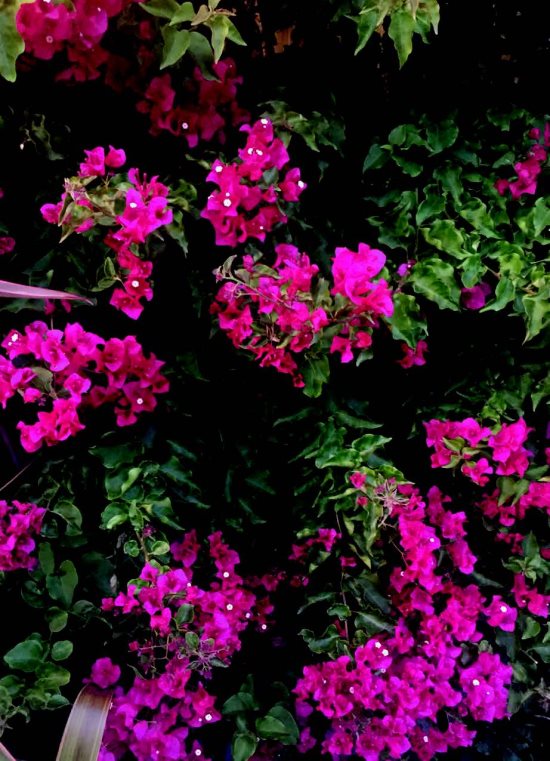 |
| Bougainvillea brightens an arbor. |
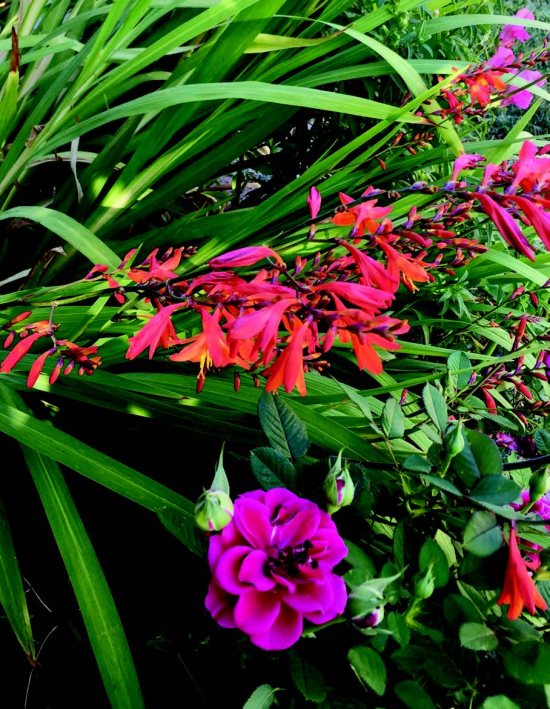 |
| |
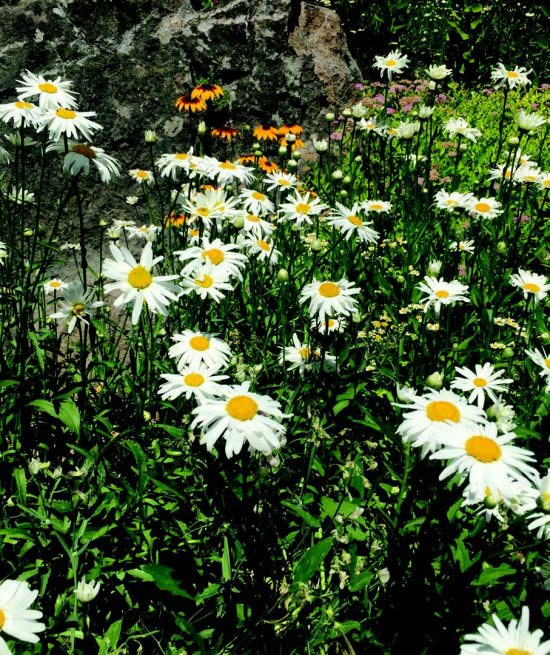 |
| Shasta daisies are especially stunning when surrounded by natural
rocks. |
 |
| Cynthia Brian by a stream. |
| Cynthia Brian, The Goddess Gardener, is a New York Times best selling author, actor, radio personality, speaker, media and writing coach as well as the Founder and Executive Director of Be the Star You Are1(r) 501 c3. Tune into Cynthia's Radio show and order her books at www.StarStyleRadio.com Available for hire for any project.
Cynthia@GoddessGardener.com
www.GoddessGardener.com 925-377-STAR |
| |
|
|
|











